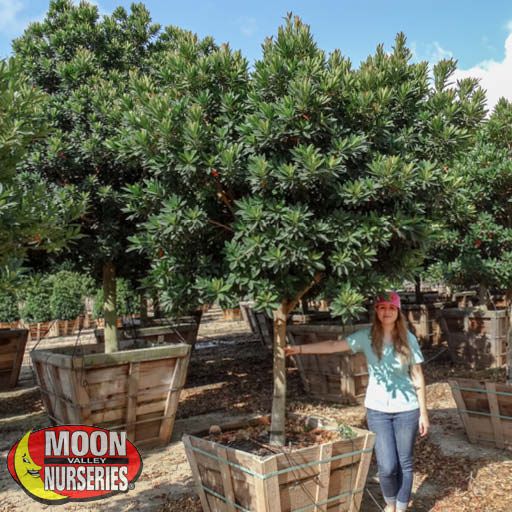
Japanese Blueberry Care Guide
The Japanese Blueberry (Elaepcarpus decipiens) is an evergreen tree that works well as a centerpiece in your landscape or as a privacy screen. They are native to Japan and China and are often planted in U.S.D.A plant hardiness zones 8 through 11 around the borders of properties. They are noted for their lush evergreen foliage that adds elegance and year-round interest to landscapes. These trees establish quickly. Japanese Blueberry are naturally beautiful trees that do not need much care or maintenance to look and stay healthy.
Where to Plant Japanese Blueberry:
A planting location with full sun exposure helps the Japanese Blueberry achieve optimal plant growth and health. Full sun exposure is at least six hours of direct sunlight per day. This evergreen tree prefers fertile, well-drained soils. Plant this evergreen tree where shade is desired. They have a dense growth habit so that they can block unwanted views. Line them up along a property line to create a privacy hedge. They are magnificent topiary trees so they can be shaped into columns ideal for a formal landscape.
How to Water:
Japanese Blueberry trees do best with regular irrigation. Give the trees 15 to 20-gallons of water each week during its first two growing seasons. Giving the tree enough water ensures that its deep, extensive root system becomes established. Reduce the amount of water to about 15 to 20 gallons twice a month during its third year. After the third year, you can water your Japanese Blueberry tree whenever the soil needs moisture. Deep soak around the root ball. Install emitters about one and a half feet from the trunk. If using a water hose, set the hose on a slow trickle so that it can thoroughly saturate the root ball. Be sure not to overwater and that there is no standing water.
How to Fertilize:
For best results, apply Moon Dust three times a year. So that you can remember easier, we recommend fertilizing with Moon Dust on Labor Day, Memorial Day, and Valentine’s Day. Apply Moon Juice every month. Those that live in Arizona and Nevada should supplement with our Soil and Water Conditioner because the water in these states is high in salt. You can purchase these beneficial fertilizers at any of our nursery locations in Arizona, California, Nevada, and Texas.
How to Trim:
Pruning a young tree can help train it to grow with an attractive shape. Japanese Blueberry trees can be grown in tree and shrub forms. If growing them as columns, pruning is required so that it can keep its columnar shape. Prune about once a year, at the beginning of the growing season. Depending on the weather, prune around late February and early March. If growing one in tree form, prune off suckers at the bottom as they appear. Prune the lower suckers because they take food and water from the main tree. As the tree grows, feel free to prune a Japanese Blueberry to fit your needs structurally.

-
BACKYARD BUILDER
Design your own custom landscaping. Learn more.

-
SCHEDULE A FREE CONSULT
Let our design experts help with your next project. Get started.





Validate your login